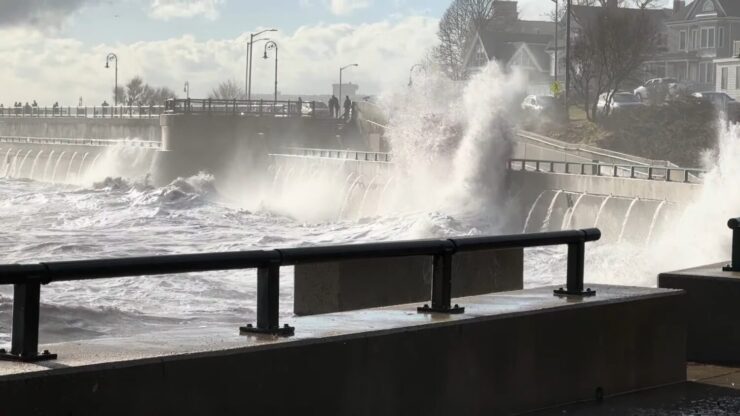Seawalls play a crucial role in coastal defense, serving as a barrier against erosion and flooding. They are engineered structures designed to withstand wave action and prevent further degradation of the shoreline.
Seawalls come in various forms, ranging from vertical to sloping, and can be constructed using different materials such as concrete, steel, or rubble. Despite their effectiveness in shoreline protection, seawalls have both advantages and disadvantages, which must be carefully considered in their implementation.
Advantages

Seawalls offer significant benefits in coastal protection. They provide a high degree of defense against erosion and flooding, safeguarding valuable infrastructure and land from damage. Well-designed seawalls fix the boundary between land and sea, ensuring no further erosion occurs, which is particularly crucial in areas with important coastal infrastructure.
Moreover, they have a lower space requirement compared to other coastal defenses like dikes, making them more cost-effective and preserving valuable coastal land for development.
Furthermore, seawalls can be progressively upgraded to adapt to climate change and sea level rise, ensuring long-term effectiveness. With proper maintenance, seawalls can have a long lifespan, providing durable protection against coastal hazards. They often incorporate amenities such as promenades, enhancing recreational opportunities and tourism in coastal areas.
Disadvantages
Despite their benefits, seawalls also have drawbacks that need to be addressed. Smooth, vertical seawalls are less effective at dissipating wave energy, leading to reflection and turbulence that can exacerbate erosion.
Scour at the foot of seawalls, particularly vertical designs, poses a significant problem and can compromise structural integrity, leading to high maintenance costs. Moreover, seawall construction alters sediment availability and disrupts natural coastal processes, leading to beach lowering and increased erosion in adjacent areas.
Seawalls can interfere with habitat migration and exacerbate coastal squeeze, reducing the area of intertidal habitats. Overtopping, where water levels exceed the height of the seawall, can result in soil erosion and structural damage, especially with sea level rise and increased storminess.
Furthermore, seawall construction limits future coastal management options and can have negative aesthetic impacts on beaches, affecting tourism and local economies.
Financial and Institutional Considerations
Financial Requirements and Costs

The construction of seawalls entails significant financial investments, with costs varying depending on factors such as design height, anticipated wave loadings, and construction materials.
Maintenance costs are ongoing and increase over time, particularly with sea level rise and climate change impacts. Poorly designed seawalls or inadequate materials can lead to higher maintenance expenses and increased socio-economic and environmental costs.
Institutional and Organizational Requirements
Seawall construction requires technical expertise and institutional support to ensure effective design and implementation. While community-scale construction is possible, it often lacks consideration for extreme events and may be less effective than designs based on scientific data.
Basic design guidance and training are essential for local communities to construct and maintain seawalls effectively. However, barriers such as high costs, limited resources, and lack of technical guidance can hinder implementation efforts.
Opportunities for Implementation

Seawalls present opportunities for coastal protection, particularly in areas where other options are limited. Less technologically advanced designs can be implemented at local levels with reduced investment and reliance on large organizations.
They can be integrated into broader coastal management plans, alongside strategies like beach nourishment and managed realignment, to mitigate negative impacts and provide comprehensive coastal defense. Strategic placement of seawalls inland can minimize interference with natural processes and create buffer zones against coastal hazards.
Summary
Seawalls serve as vital defenses against coastal erosion and flooding, offering significant protection to valuable infrastructure and land. While they provide numerous advantages, including long-term durability and amenity value, seawalls also pose challenges such as wave reflection, sediment starvation, and habitat disruption.
Addressing these drawbacks requires careful consideration of design, maintenance, and integration with broader coastal management strategies.
Despite the financial and institutional requirements associated with seawall construction, opportunities exist for effective implementation at both local and regional levels. By leveraging local knowledge and resources and integrating seawalls into comprehensive coastal management plans, communities can enhance coastal resilience while minimizing negative impacts on the environment and socio-economic factors.







